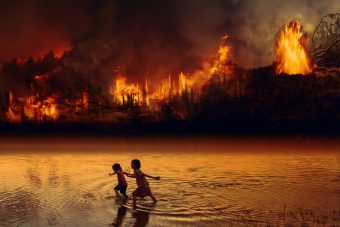
Depending on the time of the year and where you go in the Amazon, you may see two very different types of “mist”. One is the morning mist, caused by moisture that evaporates from rivers and trees and fills the air with tiny droplets of water. The other one may look like a mist but it is actually smoke coming from forest fires – a dense layer that covers entire regions, sometimes for months. While the former only brings benefits, the latter is harmful to your health and can even be fatal.
From August 2020 to July 2021, the DETER system of the National Institute for Space Research (INPE) detected alerts for clear-cut deforestation affecting 132,955 hectares in the state of Rondônia. In September of this year, the state capital, Porto Velho, was the municipality with the most hotspots in the entire Amazon.
Every year during the Amazon summer, which runs from July to October, municipalities like Porto Velho experience this direct impact of fires: smoke. Forest fires rarely occur naturally in the Amazon. They are commonly used as part of the deforestation process, either as the last step in clearing the forest or to degrade and weaken large tracts of forest – precisely at the time of the year with less rainfall.
More:
Forest fires directly affect biodiversity and steer Brazil farther away from the international goals to contain the climate crisis. But the first to be affected by them are, without a doubt, the people who live in the region, as the air they breathe becomes toxic. The smoke from fires is filled with tiny particles (sulfates, nitrates, ammonia, sodium chloride, soot, mineral particles and water) 2.5 micrometers in diameter or smaller (PM 2.5), which can be carried by the wind and travel through the atmosphere for many kilometers.
These residues, known as particulate matter (PM), can accumulate in the terminal parts of our respiratory system, the alveoli, where the gas exchange of carbon dioxide for oxygen occurs. From there, PM enters the bloodstream, causing immediate and long-term health complications.
The ones most affected by the pollution caused by fires in the Amazon are the elderly and children. “Children, because their immune system is still under development and because they have an anatomically smaller respiratory system,” explained pediatrician Daniel Pires de Carvalho, deputy general director of Cosme e Damião Children’s Hospital, in Porto Velho (RO).
The most common symptoms caused by interaction with particulate matter are burning in the throat and nostrils, pain when breathing, headaches, and persistent cough. But the effects can be even more devastating for patients with co-existing medical conditions, such as hypertension, asthma, or chronic obstructive pulmonary disease.
Source: Greenpeace



